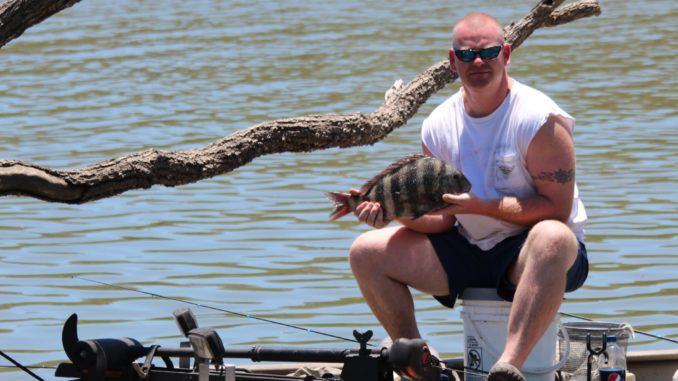
Sheepshead might been an awfully funny name for a fish, but inshore anglers don’t mind the moniker, and they are currently having good luck catching these fish in the creeks and inlets of Beaufort County.
Benji Sandifer visits Lady’s Island several times a year, and he uses fiddler crabs to catch sheepshead from the area’s waters. June has been a good month for Sandifer, and he hasn’t had to throw a single sheepshead back, despite the recent change in the size minimum for the big-toothed fish.
“The new size limit is 14 inches, but I haven’t caught one under 15 inches all year,” said Sandifer.
Bait and tackle shops like Beaufort Boat and Dock usually have fiddler crabs for sale, but Sandifer catches them himself.
“They are easy to catch at low tide, especially in the Hunting Island Lagoon. I catch them and keep them in a cricket cage,” said Sandifer.
Any place that holds barnacles is a good place to find sheepshead, and some of Sandifer’s favorite spots include the jetty at the corner of Fripp Island, a rock wall that partially lines the island at Fripp Inlet, and a partially sunken oak tree in the Hunting Island Lagoon. Of those, Sandifer said he fishes the oak tree – which is in a 90-degree bend in the lagoon and has been in place for more than five years, giving it plenty of time to collect barnacles on its sunken trunk and branches.
“It’s in the lagoon, so it’s always calmer than the other two spots,” he said. “You can’t miss it, because it’s the only 90-degree bend in the lagoon, and the only oak tree with branches reaching out of the water.”
Sandifer scrapes some of the barnacles off the tree with a knife, letting them fall into the water, hoping to stir up some activity. He ties off to the tree, using the current and wind to place his boat over the sunken part of the tree. Then, it’s time to bait up by pushing a 3/0 hook through the bottom of a fiddler, exposing the hook’s point. Attached to the hook is a 12- to 18-inch leader of 15-pound fluorocarbon, which is tied to a barrel swivel. Sandifer places a glass bead and an egg sinker above the swivel, using a half- to 1-ounce sinker, depending on the pull of the current.
Dropping his hook as close to the tree or other structure as possible, Sandifer lets the rig touch bottom, then reels it up a crank or two and waits for the subtle tap for which sheepshead are known. It’s rare for a sheepshead to hook itself, so Sandifer suggests setting the hook immediately when the bite is detected.
“One tap is all it takes for these fish to crush the crab and suck the meat out. They won’t nibble like flounder do,” he said.





Be the first to comment